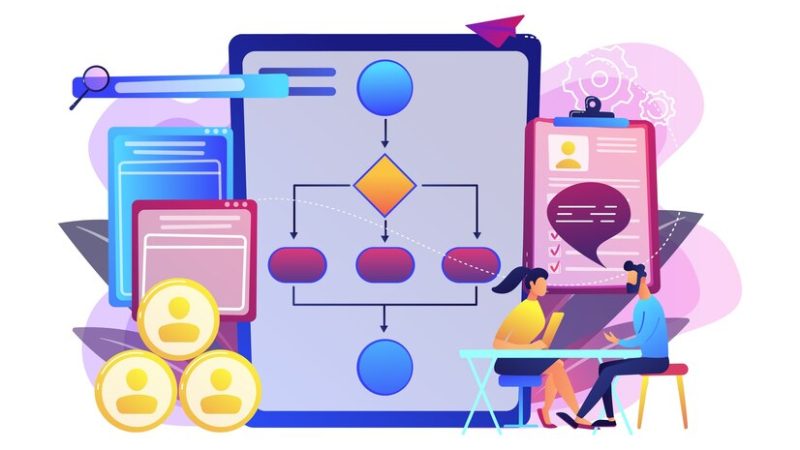Introduction
The world of app development has seen remarkable transformations with the advent of the Mobile Internet of Things (IoT). As more devices get connected, the landscape for app developers is shifting dramatically. This article explores the impact of Mobile IoT on the app development industry, examining the opportunities and challenges it presents to developers and providing insights into the tools and technologies that are driving this evolution.
What is Mobile IoT?
Mobile IoT, also known as Cellular IoT, is a subset of the broader IoT ecosystem. It involves connecting various devices and sensors to the internet via cellular networks. This connectivity allows devices to communicate, collect data, and be remotely controlled, thus creating a network of interconnected “smart” devices.
The Evolution of IoT and Mobile Apps
IoT has been evolving for several years, with devices ranging from smart thermostats to wearables and industrial sensors becoming increasingly prevalent. However, the integration of Mobile IoT has accelerated this evolution, connecting a wide range of devices to the internet via cellular networks, enabling them to interact with mobile applications.
Opportunities for App Developers
Enhanced User Experience
Mobile IoT enables developers to create apps that offer a seamless and personalized user experience. For instance, apps can receive real-time data from IoT devices, allowing users to monitor and control their smart home, car, or health devices remotely.
Diverse Use Cases
The versatility of Mobile IoT offers app developers a wide range of use cases. From healthcare and agriculture to transportation and industrial processes, developers can create applications for numerous industries, addressing specific needs and enhancing efficiency.
Data Monetization
The data collected by IoT devices presents monetization opportunities for app developers. They can analyze this data, extract valuable insights, and offer data-based services or sell data to third parties.
Challenges for App Developers
Security Concerns
With increased connectivity, security becomes a paramount concern. Developers must ensure that the data exchanged between devices and apps is secure, safeguarding user privacy and preventing potential breaches.
Compatibility and Fragmentation
Mobile IoT apps need to be compatible with a variety of devices and networks, which can be challenging due to device fragmentation. Developers must optimize their apps to work seamlessly across different platforms and devices.
Battery Life
IoT devices often run on limited battery power. Developers must create energy-efficient apps to minimize the impact on device battery life while maintaining functionality.
Tools and Technologies
Various tools and technologies have emerged to aid developers in creating Mobile IoT apps. These include IoT platforms like AWS IoT, Azure IoT, and Google Cloud IoT, which provide a robust infrastructure for data management, device control, and analytics. React Native and Flutter are two app development frameworks that enable cross-platform app development for multiple devices.
Case Studies
Healthcare
IoT is revolutionizing the healthcare industry, allowing doctors to remotely monitor patients and patients to track their health in real time using mobile apps. For instance, wearable devices can transmit vital signs to medical professionals, ensuring timely interventions.
Smart Homes
The usage of smart home applications is on the rise as they enable homeowners to have control over various aspects, such as lighting and security systems. By integrating with these devices, mobile IoT apps provide a complete smart home experience.
Industrial IoT
In the industrial sector, Mobile IoT apps are used to monitor equipment and optimize operations. For example, sensors on manufacturing machines can send real-time data to mobile apps, enabling predictive maintenance and reducing downtime.
Ready to Enhance Your Mobile Apps with IoT Capabilities?
Elevate your mobile applications by seamlessly integrating the transformative capabilities of the Internet of Things (IoT). In the rapidly evolving tech landscape of today, IoT has emerged as a game-changing force, enriching your mobile apps with unprecedented features and functionality.
Through IoT technology, your mobile applications can seamlessly access a wealth of data from interconnected devices, facilitating real-time communication, data aggregation, and automation. Octa Consulting specializes in IoT integration, customizing solutions that cater to your specific requirements, whether your focus lies in healthcare, smart homes, industrial automation, or other industries poised to benefit from IoT innovation.
The incorporation of IoT into your mobile applications unlocks a multitude of advantages. Users’ experiences are elevated through real-time data, monitoring, and control, rendering your apps more versatile and captivating. Moreover, IoT capabilities present a gateway to diverse monetization opportunities, with data collected from IoT devices analyzed and transformed into valuable insights.
However, the process of integrating IoT into mobile applications can be intricate, necessitating a deep understanding of both software development and hardware integration. A team of seasoned experts can expertly navigate you through this journey, ensuring a smooth and secure IoT integration process.
Ready to Launch your Mobile IoT App?
Embarking on a journey to launch a Mobile IoT app can be thrilling, but its triumphant outcome demands meticulous planning and execution. Here are some crucial steps to contemplate when you’re all set to launch your Mobile IoT app:
Market Research:
Conduct thorough market research before launching your Mobile IoT app. Identify your target audience, their needs, and the competition. Determine your app’s unique selling proposition by identifying the specific pain points it addresses.
Define Your Unique Value Proposition:
Clearly articulate what sets your Mobile IoT app apart from others. Highlight the unique features and benefits it offers to users.
Create a Business Plan:
Develop a comprehensive business plan that outlines your app’s monetization strategy, pricing model, and revenue projections.
Development and Testing:
Achieving a seamless user experience requires thorough development and testing of your app, with a strong emphasis on quality assurance. It enables you to discover and eliminate any potential problems or concerns.
Compliance and Security:
Mobile IoT applications must comply with data protection regulations such as GDPR and implement robust security measures to protect sensitive user data.
User-Friendly Design:
User experience is paramount. Your app should have an intuitive and user-friendly design, ensuring that users can easily interact with it.
Network Compatibility:
Verify that your Mobile IoT app is compatible with a wide range of devices and cellular networks. Compatibility issues can frustrate users and affect your app’s success.
Marketing and Promotion:
To promote your app, develop a thorough marketing plan that includes a website, social media, press releases, and relationships with influencers and industry experts.
App Store Optimization (ASO):
Optimize your app store listings with the right keywords, compelling descriptions, and high-quality visuals to improve its visibility and discoverability.
Beta Testing and User Feedback:
To get input, do beta testing with a small number of users. Use this feedback to make any required changes and develop your app.
Launch Strategy:
Decide on a launch date and time. Consider factors like time zones and peak app store traffic. Plan for a soft launch or a phased rollout if necessary.
User Support:
Offer user support through various channels, such as email, chat, or a support website. Be ready to address user inquiries and issues promptly.
Monitoring and Analytics:
Implement analytics tools to monitor user engagement and app performance. Use these insights to make data-driven decisions and updates.
Updates and Maintenance:
Prepare to distribute updates on a frequent basis to enhance your software and fix any concerns that may develop.
Feedback Loops:
Continuously gather and analyze user feedback to drive ongoing improvements and innovations in your Mobile IoT app.
Scaling and Growth:
As your app gains traction, be prepared to scale your infrastructure and expand your user base. Consider internationalization if applicable.
Community Building:
Foster a community of users who can share experiences, provide support, and advocate for your app.
Launching a Mobile IoT app is a significant undertaking, and success may take time to happen. It requires a combination of technical excellence, market understanding, and effective marketing. By following these steps and adapting to the ever-evolving Mobile IoT landscape, you can increase your app’s chances of success in this dynamic and competitive space.
Conclusion
Mobile IoT provides new opportunities for app developers but also presents challenges. Developers must address device compatibility, security concerns, and battery life. They need to prioritize the privacy and security of user data and stay up-to-date with the latest tools and technologies. Real-world case studies show the positive impact of Mobile IoT. By embracing the possibilities while addressing the complexities, app developers can drive innovation and create solutions that benefit businesses and users.








